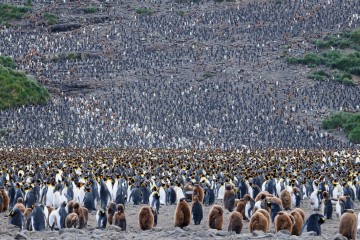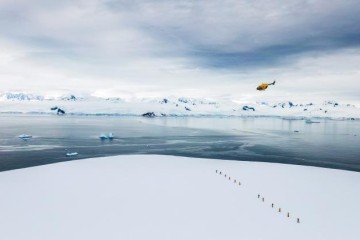Classic South Georgia
Tour Overview
Join a 22 day small ship expedition to explore the wonders of the Falkland Islands, South Georgia, Antarctica & the South Shetland Islands.
A former oceanographic research ship be converted to accommodate 88 guests, the Ushuaia offers exceptional service and an incredibly intimate Antarctica travel experience, one of the smallest ships sailing to Antarctica.
Sail from Ushuaia, to the Falkland Islands (Malvinas) aiming to explore the Western Falkland Islands and the Eastern Falkland Islands looking for Gentoo and Magellanic Penguins, Peale´s and Commerson´s dolphins and alot of bird life. Call in at the remote outpost of Port Stanley and check out the pubs, and wonderful museum before cruising onward to South Georgia.
South Georgia is something entirely else. Close encounters with local fauna can be had on the tussac grass-covered moraines or in one of the many protected valleys that include meltwater streams. Join us as we discover the many wonders that South Georgia has to offer. Witnessing elephant seals with their pups on the beaches of South Georgia in the spring is a must-do. During this time, large male elephant seals will remain on guard to protect their harems. You may even witness bull fighting on the beaches!
Another highlight will surely be the beaches teeming with thousands of king penguins and the chance to see Macaroni Penguins with their golden crests climbing high amongst the rocks. Keep your eyes peeled for multiple species of albatross, including the Black-browed, Grey-headed, and Light-mantled Sooty. All expedition cruising is an adventure dependent on nature and the weather, but we will aim to visit iconic sights including Salisbury Plain, Grytviken (Where Shackleton's grave lies), St Andrews Bay and Drygalski Fjord.
From South Georgia, cruise to Elephant Island, the South Shetland Islands and onwards to the majestic white continent of Antarctica...where you will spend days exploring majestical bays, channels, penguin rookies and more!
Viva's Best Bits...
Enjoy an intimate small ship cruise to Antarctica, exploring stunning landscapes and witnessing fantastic wildlife. Visit Elephant Island and learn about the amazing stories of Sir Ernest Shackleton
Witness huge colonies of King Penguins and Elephant Seals in South Georgia. Travel in October is a wonderful time to observe tender moments between mother and pup elephant seals.
The Falkland Islands are perfect for spotting birds such as the Souther Giant Petrels, Streamer Ducks, Peregrine Falcons and Red-backed Hawks.


